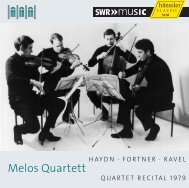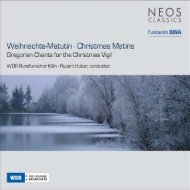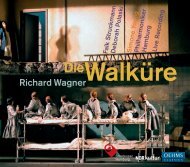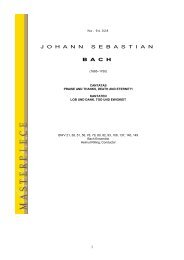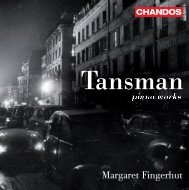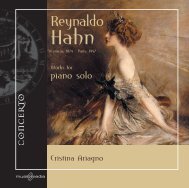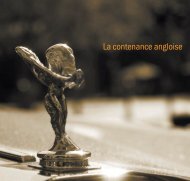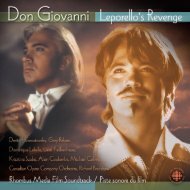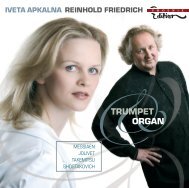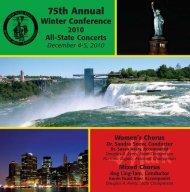ViVAldi - Naxos Music Library
ViVAldi - Naxos Music Library
ViVAldi - Naxos Music Library
Create successful ePaper yourself
Turn your PDF publications into a flip-book with our unique Google optimized e-Paper software.
Antonio Vivaldi –<br />
Gods, Emperors and Angels<br />
S<br />
I have the honour to exchange<br />
letters with nine Highnesses,<br />
and my letters travel all over Europe.<br />
Antonio Vivaldi, November, 1737<br />
uch were the lofty circles in which Vivaldi<br />
moved, and none was loftier than that of the<br />
Holy Roman Emperor Charles VI (1685 –1740),<br />
a keen amateur composer and accompanist, the<br />
last emperor of the direct Habsburg line.<br />
In his efforts to gain the emperor’s patronage,<br />
Vivaldi dedicated two lavish sets of string<br />
concertos to him; his Opus 9 of 1727, and a set<br />
of parts in manuscript which he presented in<br />
person during the imperial visit to Trieste between<br />
10 and 12 September, 1728. Both sets<br />
were titled La cetra (The Lyre), a name chosen<br />
to flatter the emperor by comparing him with<br />
Apollo, whose lyre had become interchangeable<br />
with the violin.<br />
Of the five (?) partbooks of the 1728 collection,<br />
that of the solo violin has been lost. Seven<br />
concertos survive elsewhere including the tenth<br />
concerto (RV 271) whose autograph score (additionally<br />
bearing the name L’Amoroso – The<br />
Lover) can be found in Vivaldi’s personal manuscript<br />
archive in Turin’s Biblioteca Nazionale.<br />
For the two double concertos on the other<br />
hand, the first solo part is easily reconstructed<br />
from the second solo part as shown here in the<br />
concerto in B flat (RV 526). Was Vivaldi’s decision<br />
to include two double concertos in the<br />
1728 set a direct result of the favourable reception<br />
of the sole double concerto (RV 530) of the<br />
1727 publication?<br />
We know Vivaldi was absent from Venice during<br />
late 1729 and early 1730 as his father, Giovanni<br />
Battista Vivaldi, a violinist in the Ducal<br />
Chapel of St Mark’s, was granted leave to accompany<br />
Vivaldi to ‘Germania’, a territory which<br />
then also included Bohemia and present-day<br />
Austria. As much of this territory was ruled by<br />
Charles VI (who was also King of Bohemia), one<br />
wonders if the tour was facilitated by Vivaldi’s<br />
previous favourable reception.<br />
This sojourn possibly enabled Vivaldi to renew<br />
his acquaintance with the Bohemian aristocrat<br />
Count Wensel von Morzin, hereditary lord<br />
of Hohenelbe and advisor to Emperor Charles<br />
VI. Vivaldi had known the count for some years,<br />
acting as his kapellmeister in absentia and more<br />
recently dedicating his Opus 8 concertos (1725)<br />
to him. Other works written for the count’s ‘virtuosissima<br />
orchestra’ include the g minor bassoon<br />
concerto (RV 496) which bears his name,<br />
and perhaps two further bassoon concertos<br />
whose manuscript paper is of Bohemian origin.<br />
One of these is the concerto in a minor (RV 500),<br />
possibly written around the same time as the<br />
fragment in d minor (RV 482) since both works<br />
contain similar compositional devices.<br />
Another work written on Bohemian paper is<br />
the bizarre concerto Conca or Conch Concerto<br />
(RV 163), one of approximately sixty works




